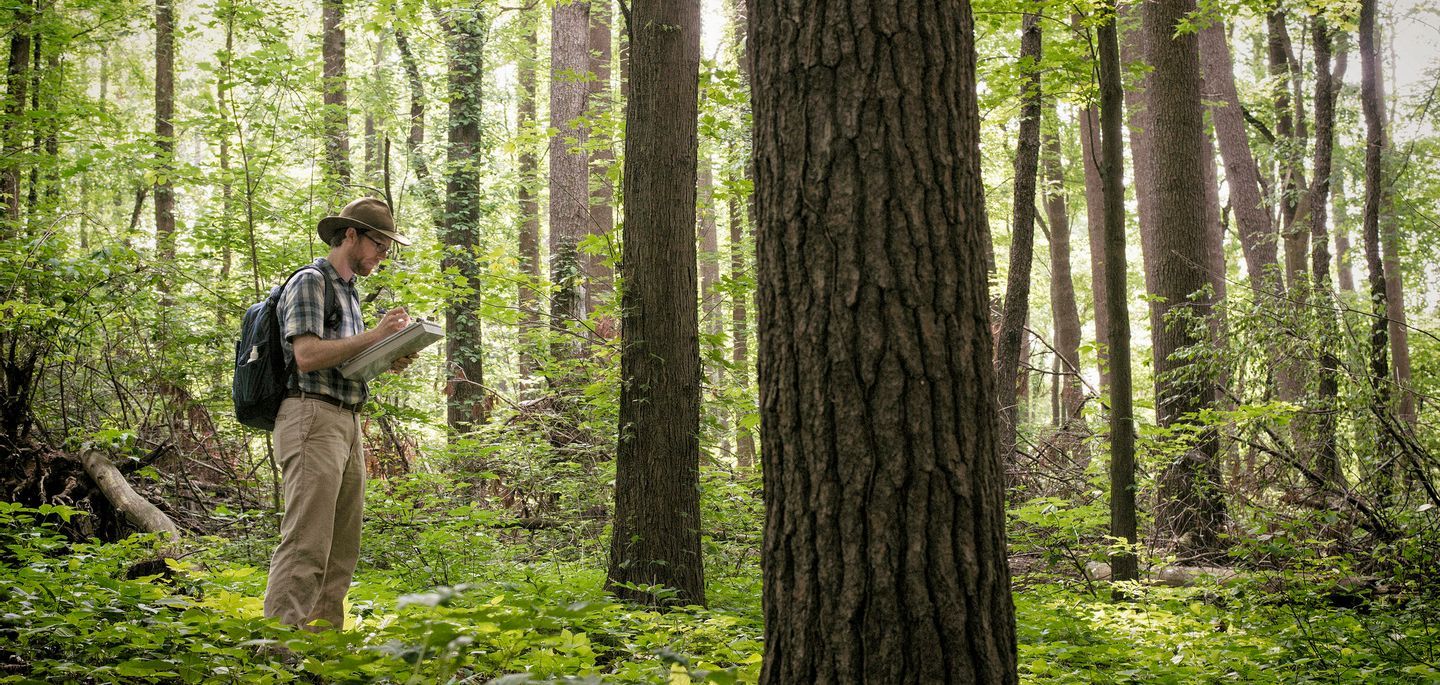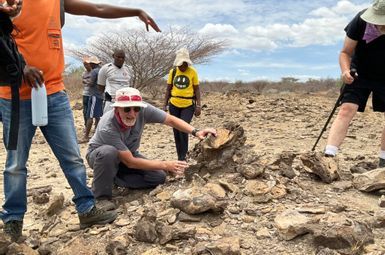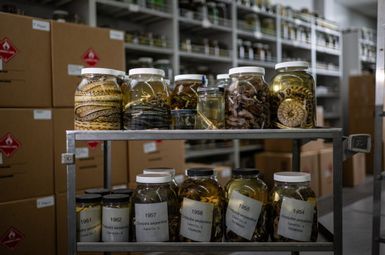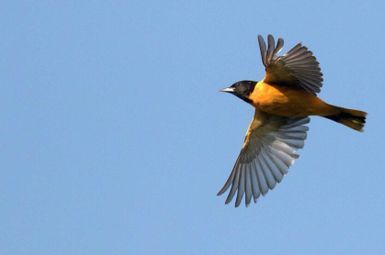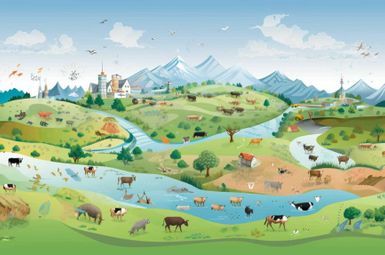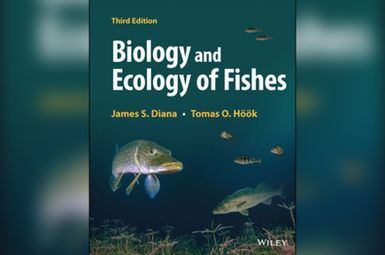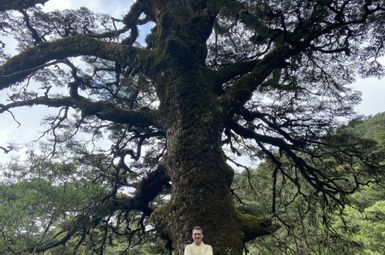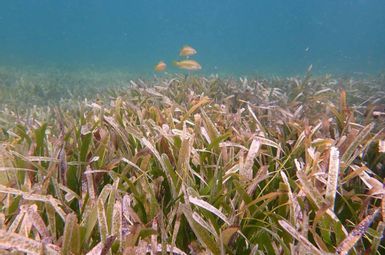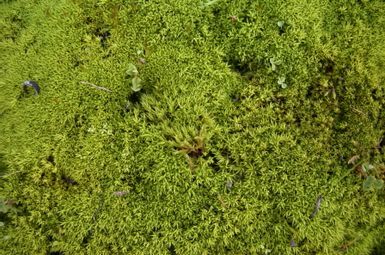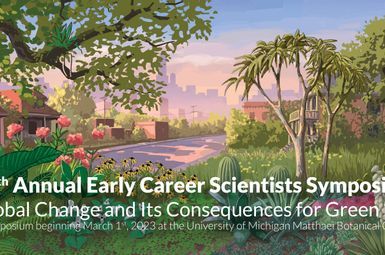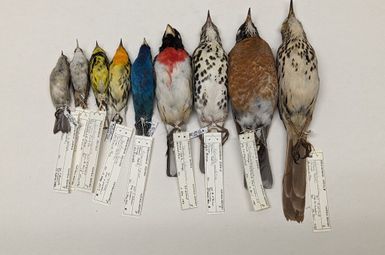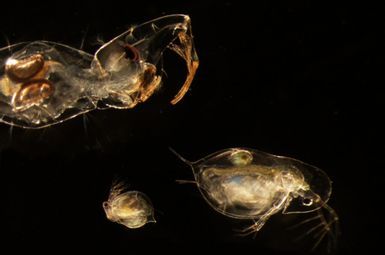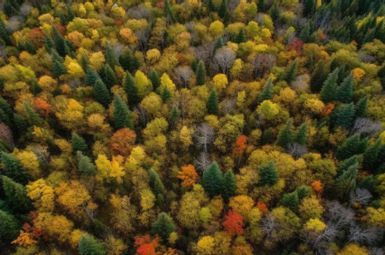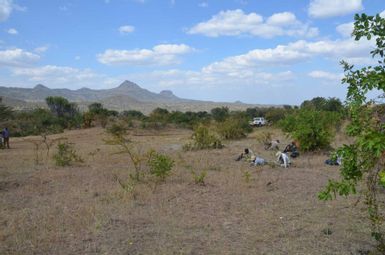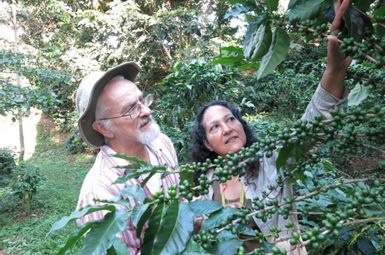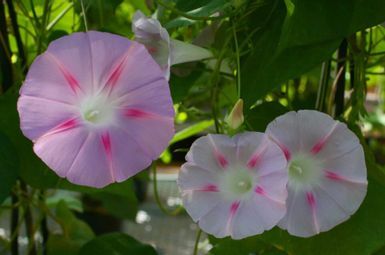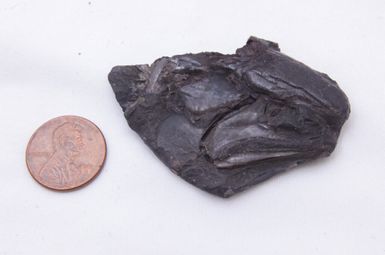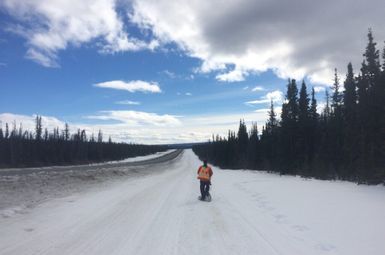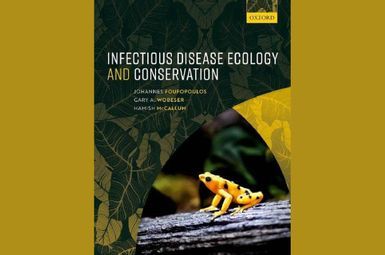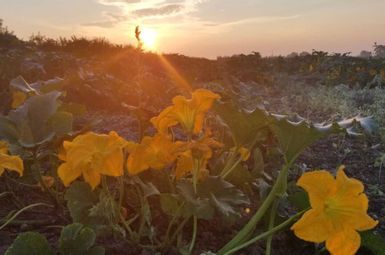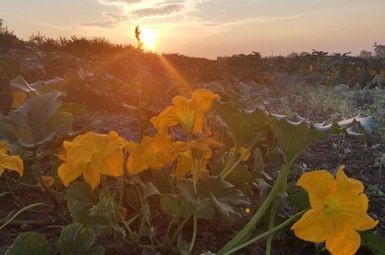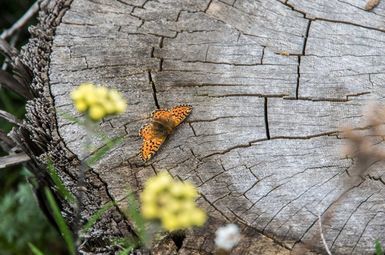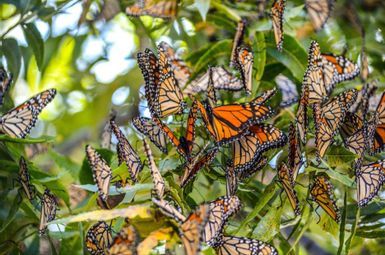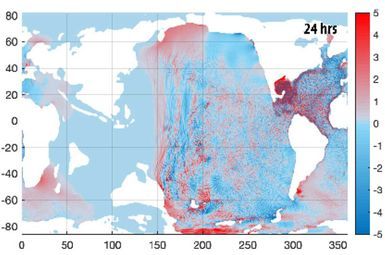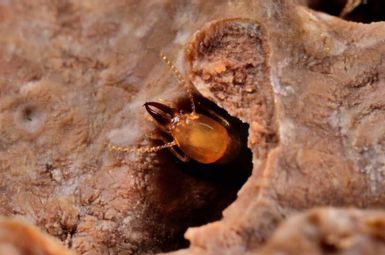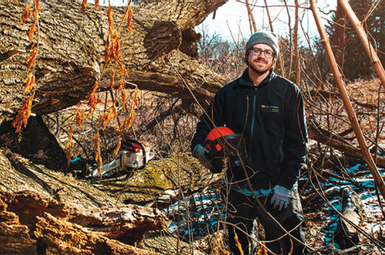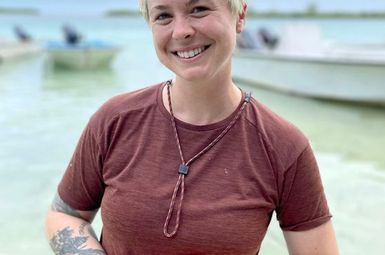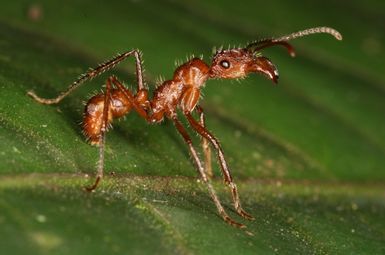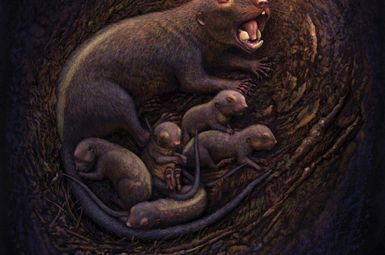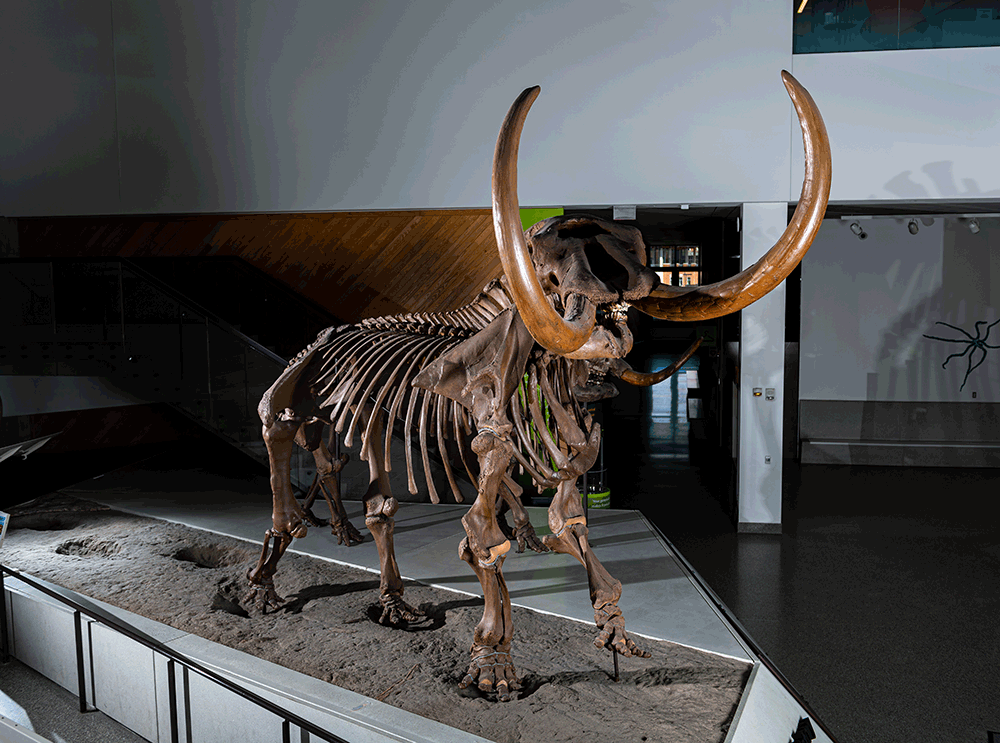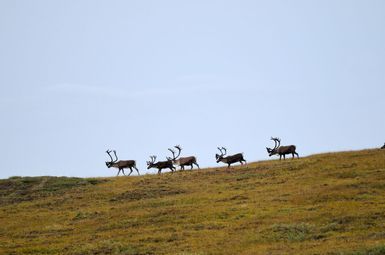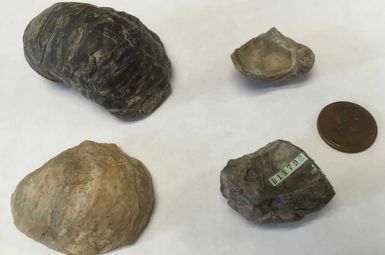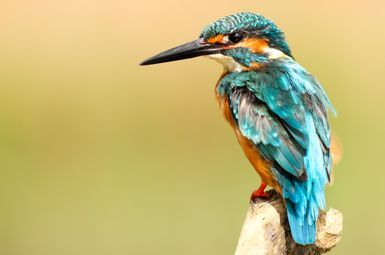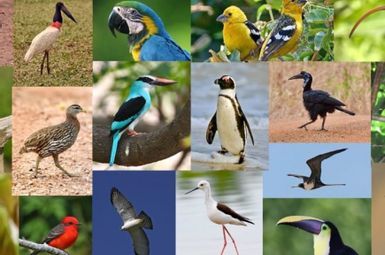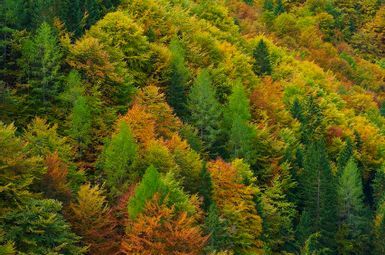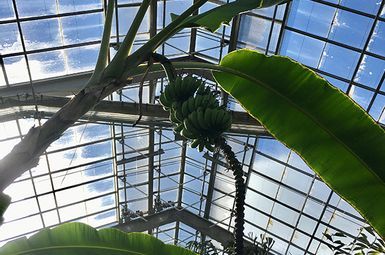In order to fully comprehend humanity’s impact on global ecosystems, and best inform conservation and restoration efforts going forward, it is crucial to understanding how different species adapt to our changing world. University of Michigan researchers at the School for the Environment and Sustainability (SEAS), the LSA Department of Ecology and Evolutionary Biology, and the Graham Sustainability Institute are examining how organisms adjust to new habitats in an era of human-accelerated climate change, what biological underpinnings exist, and what stakeholders should bear in mind accordingly.
Local gem hosts researchers throughout the decades
Since 1930, U-M has maintained the Edwin S. George Reserve (ESGR) to provide research and educational opportunities, as well as preserve native flora and fauna. The 525-hectare fenced ESGR is located in Livingston County, Michigan (about 25 miles northwest of Ann Arbor) and hosts students, postdocs and faculty as well as biologists from other universities throughout the year.
Elephants: Earth’s giant climate change canaries
“Elephants, in a way, are the giant versions of canaries in a mine for the planet. If we cannot sustain animals as big and as capable and as versatile as elephants, then that means we have ripped a hole in the fabric of life on Earth in a way that could actually be very dangerous to ourselves. It could lead to our own demise.”
Hiss-toric first: U-M museum’s 70,000 snake specimens form world’s largest research collection
The U-M Museum of Zoology recently acquired tens of thousands of scientifically priceless reptile and amphibian specimens, including roughly 30,000 snakes preserved in alcohol-filled glass jars. The new acquisitions boost the university’s collection of reptiles and amphibians to roughly half a million specimens, including some 70,000 snakes. With the latest additions, U-M now maintains the largest research collection of snakes anywhere in the world, according to museum curators.
Space weather disrupts nocturnal bird migration, study finds
It’s well-known that birds and other animals rely on Earth’s magnetic field for long-distance navigation during seasonal migrations. But how do periodic disruptions of the planet’s magnetic field, caused by solar flares and other energetic outbursts, affect the reliability of those biological navigation systems?
U-M professor is developing precision medicine to stop a devastating hemlock pest
The hemlocks of eastern North America are threatened by the hemlock woolly adelgid (HWA), an invasive, sap-sucking bug that was introduced to the eastern United States from Japan in 1951. Because HWA is a nonnative species, there are no natural predators to control its population size in eastern North America, and the region’s hemlocks haven’t evolved any resistance against it, so eastern hemlocks can be sucked dry by severe HWA infestations.
New genus of red algae that mimics corals
“I just thought it was an interesting story that this red alga looks so much like an animal, namely, a coral. It had been unnoticed as such, and then it turned out to have some distinctive features.”
Study: Modest moss supports billions of tons of carbon storage
Plant life plays a crucial role in fighting climate change by absorbing and transforming greenhouse gases like carbon dioxide. For instance, over its lifetime, a tree can absorb more than a ton of carbon from the air and store it in wood and roots.
Recap: Early Career Scientist Symposium focuses on green life
This year’s theme was “Global Change and Its Consequences for Green Life,” and focused on the Direct and indirect impacts of environmental change on green life survival, reproduction, and distribution, how green life can buffer the impact of global change, evolutionary responses of green life to environmental change/stress, green life functional traits and their environmental correlates, and agroecology.
Plants: Nature’s unlikely victors
"A lot of people think plants are boring because they don’t move in the way animals do, but I think it makes them especially interesting. Plants can’t run away from a creature trying to eat them but, instead, they have more interesting defense mechanisms to protect themselves."
Bigger flowers, greater rewards: Plants adapt to climate disruptions to lure pollinators
There’s been a well-documented shift toward earlier springtime flowering in many plants as the world warms. The trend alarms biologists because it has the potential to disrupt carefully choreographed interactions between plants and the creatures that pollinate them. But much less attention has been paid to changes in other floral traits, such as flower size, that can also affect plant-pollinator interactions, at a time when many insect pollinators are in global decline.
Squirrels that gamble win big when it comes to evolutionary fitness
Imagine overhearing the Powerball lottery winning numbers, but you didn’t know when those numbers would be called—just that at some point in the next 10 years or so, they would be. Despite the financial cost of playing those numbers daily for that period, the payoff is big enough to make it worthwhile. Animals that live in highly variable environments play a similar lottery when it comes to their Darwinian fitness, or how well they are able to pass on their genes.
New activity trackers for dolphin conservation
Dolphins and other sea creatures are affected by human disturbances in their habitat, including climate change, overfishing, noise pollution from shipping, construction, oil exploration and navy sonar activity. These types of disturbances can interrupt important animal behavior like foraging for fish and socializing, but measuring disturbance is difficult because the animals live under water.
Michigan bee study: Both habitat quality and biodiversity can impact bee health
Efforts to promote the future health of both wild bees and managed honeybee colonies need to consider specific habitat needs, such as the density of wildflowers. At the same time, improving other habitat measures—such as the amount of natural habitat surrounding croplands—may increase bee diversity while having mixed effects on overall bee health.
Michigan bee study: Both habitat quality and biodiversity can impact bee healt
Efforts to promote the future health of both wild bees and managed honeybee colonies need to consider specific habitat needs, such as the density of wildflowers. At the same time, improving other habitat measures—such as the amount of natural habitat surrounding croplands—may increase bee diversity while having mixed effects on overall bee health.
What makes a migratory monarch?
When autumn arrives in the eastern United States and Canada, millions of monarch butterflies take flight, starting a 3,000-kilometer journey toward their overwintering locations atop a few mountain ranges in Michoacán, Mexico. Unlike avian migrants that similarly escape North America’s cold winters by venturing south, the monarch butterflies’ migration is a generational one.
Study: Termites may have a larger role in future ecosystems
Termites are critical in natural ecosystems—especially in the tropics—because they help recycle dead wood from trees. Without such decayers, the world would be piled high with dead plants and animals. But these energetic wood-consuming insects could soon be moving toward the North Pole and South Pole as global temperatures warm from climate change, new research indicates.
Take good care
If you’re out walking through the woods on a sunny, wet afternoon, you might notice some pretty leaves or clusters of wildflowers. But when Chad Machinski (BS ’14) strolls through Nichols Arboretum, he not only knows the name of all the plants, trees, and insects he sees, but he also understands the intricate ways they are connected.
Cold-survival strategies in animals: A spectrum, not either-or
Animals have three main strategies to survive the freezing temperatures of winter: migrating, remaining in place and resisting the cold, and reducing body temperature and metabolic rate in a state called torpor. These cold-survival strategies are often studied in isolation by biologists and treated as mutually exclusive alternatives: An animal species is described as either migrating or hibernating (torpor includes both dormancy and hibernation), for example. But in reality, many animals combine multiple strategies to beat the cold.
Higher levels of biodiversity appear to reduce extinction risk in birds
A new U-M study has found that higher levels of biodiversity—the enormous variety of life on Earth and the species, traits and evolutionary history they represent—appear to reduce extinction risk in birds. Prior research has established that biodiversity is associated with predictable outcomes in the short term: diverse systems are less prone to invasion, have more stable productivity, and can be more disease resistant.
Marine biologist Ayana Elizabeth Johnson to deliver Wege Lecture
Marine biologist and climate policy expert Dr. Ayana Elizabeth Johnson will deliver the Wege Lecture on Sustainability on February 23. Johnson is the co-founder of Urban Ocean Lab, a think tank for coastal cities, and co-creator (and former co-host) of the Spotify/Gimlet podcast “How to Save a Planet,” which discusses climate solutions.
When is a banana tree…not a tree?
Winter visits to the conservatory at Matthaei Botanical Gardens are a treat for the senses: warm temperatures, lush greenery, and plants in bloom or in fruit. A visitor favorite is one of the banana tree plants, which just finished a fruiting cycle. Despite its height, it’s not a true tree after all.
What lies beneath: Detroit River narratives emerge through schooner trips, boat building
Sail outings, arranged as part of a new Skiff and Schooner program piloted by U-M’s Detroit River Story Lab, include learning stations devoted to the physics of ship construction and buoyancy, river ecology, the carbon cycle and the river’s role in the history of the Underground Railroad. The lab partnered with several community groups including Communities First in Flint and Healthy Kidz in Detroit for the trips.
How museum collections can enhance public health
The Research Museums Center on Varsity Drive houses four large museum collections – anthropological archaeology, botany, paleontology, and zoology. For animal biologists, these collections help us learn more about animal health and ecological science. And maintaining the health of animal populations is vital to maintaining healthy ecosystems in every corner of the world.


